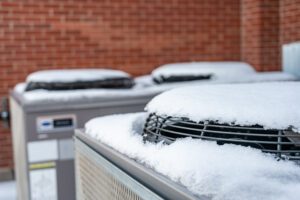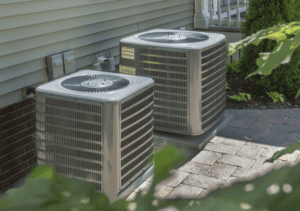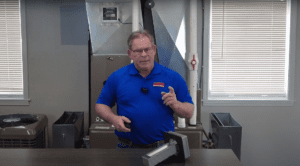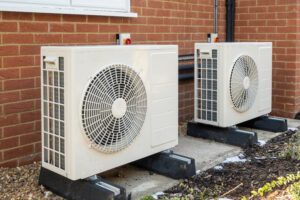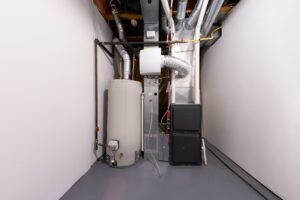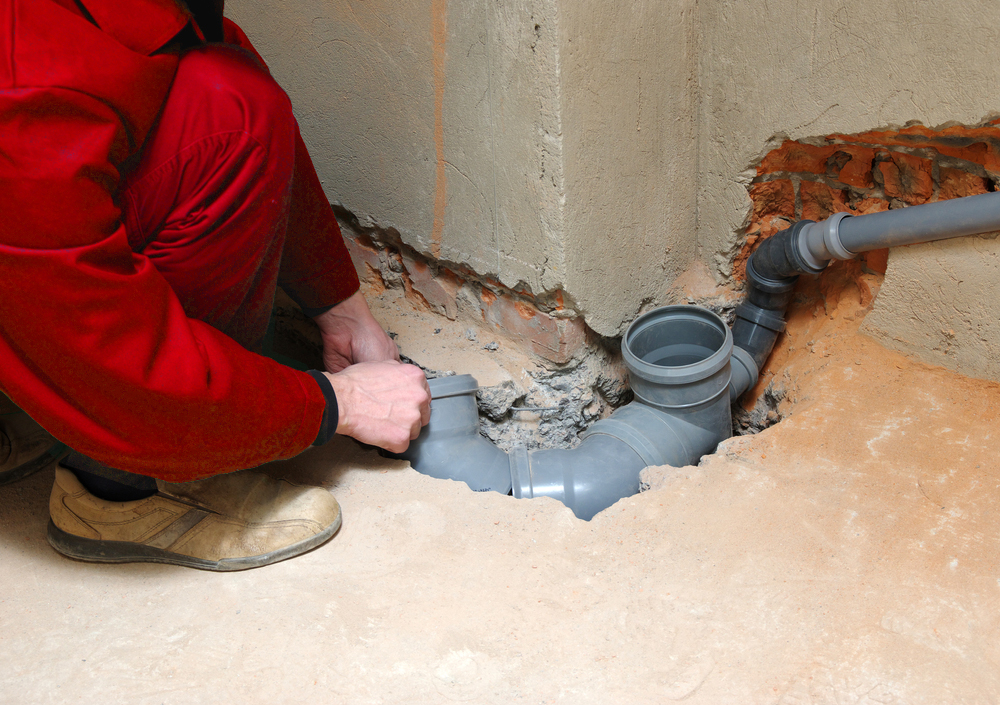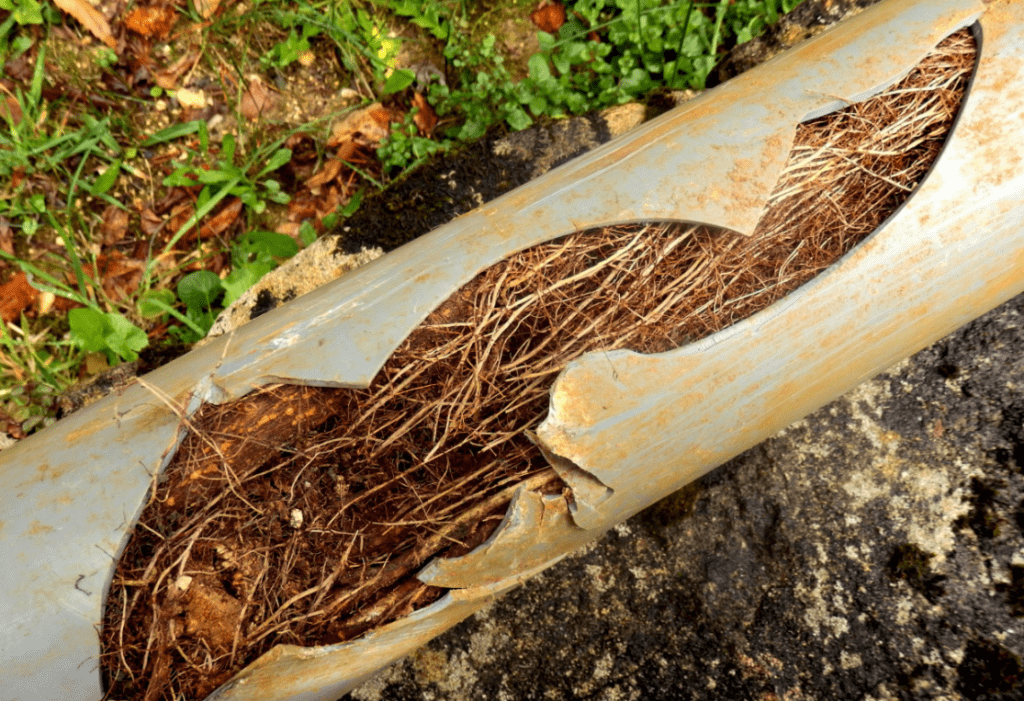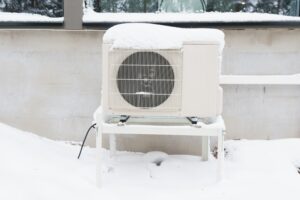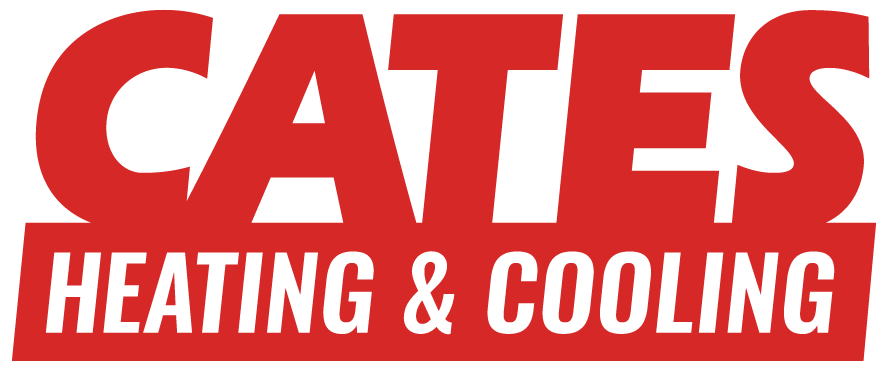A sewer backup in your home can be a real plumbing disaster. Wastewater and sewage that doesn’t properly drain away, either due to a pipe problem or an obstruction, can leave your home and belongings susceptible to thousands of dollars worth of damage. If you see raw sewage pooling around drains, tubs, toilets, or in your basement, this is an indication that your home has a sewage problem.
Before your walls, carpet, and furniture are severely damaged, you’ll want to diagnose and fix the problem as soon as possible. That’s why we’ve compiled a list of the most common sewage backup causes, what you can do to alleviate the problem, and how you can prevent sewage backups from occurring in the future.
What Are the Sewer and Main Sewer Line?
Sewage is created every time you wash something down a drain or flush the toilet. Because these substances are considered waste, a sanitary sewer system is required to protect public health and water quality.
A sewer system is made of many parts, including manholes, pumping stations, and underground pipes, which all move wastewater from homes to treatment plants, where the water is treated and returned back into the environment.
Your home’s main sewer line is where all sewage and wastewater go from your house to your septic tank or a public city connection. This line is typically found outside or at the lowest portion of your home, such as a garage, basement, or crawl space. Because sewer lines are connected to the pipes inside your home, a sewage backup can quickly become a plumbing emergency.
What Are the Signs of a Sewage Backup?
A sewer backup occurs when a blockage or clog forms in the main sewer line of your home. The biggest indication that you may be experiencing a sewer backup is if you see or smell sewage and dirty wastewater. When your sewer backs up, these substances tend to pool up around drains, toilets, and other sewer pipe connections found in your basement.
Besides a nasty smell, there are other early signs of an impending backup to look out for, including:
- Gurgling Noises: Air bubbles develop when your sewer drain pipe begins to clog. These bubbles can visibly be seen in toilets and create gurgling sounds from drains.
- Drains Moving Slowly: If more than one drain in your home is moving slowly, this is a sign that a blockage is forming in your main sewage line.
- Water Backup in a Tub or Shower: It is not normal for water to back up in a bathtub or shower unless there is some sort of blockage in the drain line.
- Wetness Around Floor Drains: Your basement, garage, or laundry room may have floor drains. Often, these are the first spots that sewage will back up before appearing in toilets or showers. If you spot wetness around floor drains, call a plumber as soon as possible.
- Changes to Your Yard: If you notice sinkholes, lush spots, or pooling water in your yard, this may indicate that there is extensive damage to your sewer lines that must be fixed.
Most Common Causes of Sewer Backups
What causes the main sewer line to back up? Unfortunately, there are a variety of sewage backup causes that may lead to plumbing problems in your home. Identifying the cause of the sewer backup will help you get the problem fixed in a timely manner.
1. Blocked or Clogged Pipes
Your home’s main sewer line can become clogged or blocked just as easily as individual drain pipes in your home. The main sewer line is only large enough for human waste and toilet paper to wash through, so if other items are flushed or poured down the drain that shouldn’t be, they can create a backup.
If the backup is from an individual drain clog, you will only experience plumbing problems with that specific drain. However, if the backup is from the main sewer line, multiple areas in your home will experience plumbing issues, such as multiple toilets or drains.
2. Tree Roots
Trees and other plants seek moisture and other nutrients found near your sewer line, especially during dry seasons or droughts. Over time, tree roots will grow above or around sewer piping, causing cracks to form. They are also extremely heavy, so they tend to grow and wrap around sewer lines, eventually crushing the pipes. The roots can then infiltrate these cracks and create a blockage, leading to a sewage backup.
Sewer problems related to tree roots are especially common with older homes with clay piping because the clay can be easily cracked. Even if a tree is nowhere near your sewer line, its roots can cross property boundaries even if it’s located far away. Tree roots that have infiltrated your sewage pipes will need to be cut away, and the pipe will need to be repaired or replaced.
3. Damaged Sewer Pipes
Sewer pipes are susceptible to damage from earth movement and insufficient ground support, leading to broken and collapsed pipes. This is another common problem with older homes that have old piping systems made with iron or clay.
A sewage backup can occur from a cracked, broken, or collapsed line. Iron pipes also tend to deteriorate over time, causing corrosion that eats away at the pipes. Fortunately, many damaged sewer pipes can be repaired using trenchless pipe repair, a maintenance process that causes minimal disturbance to your home or yard.
4. Heavy Rainfall
Although public sewer systems are made to handle large amounts of water, they still have a limited capacity. Heavy rainfall, especially when prolonged over a longer period, can cause major problems for sewage systems. If rain causes the system to exceed its capacity limit, the excess water may back up into residential homes.
5. Sewer System Age
Many older sewer systems have cast iron and clay piping. While these materials are relatively durable, they aren’t made to last forever. Even PVC piping will deteriorate over time and eventually collapse with age. Many homes experience sewage backups, overflows, and basement flooding when sewer systems become too old.
6. Municipal Sewer Problems
Sometimes, sewer backups can be caused by a problem outside your home, such as a city sewer blockage. If you’re wondering what causes sewage backup in basements, municipal sewer problems are usually to blame. While these issues are typically detected and treated rather quickly, they can still impact nearby residential sewer lines.
Unfortunately, there isn’t much you can do regarding this type of sewer problem. Homeowners should reach out to their local city or municipality and work with them directly to fix the issue. While sewage backups from city sewer problems typically happen with no warning signs, if you start to notice water rapidly entering your basement, it’s best to contact your local public works office right away.
Dangers of a Sewage Backup
Besides being a large inconvenience and potentially causing water damage in your home, a sewage backup can also pose other dangers to you, your family, and your pets. Dirty water and sewage can lead to mold growth in your home, and those suffering from allergies or asthma may experience breathing problems.
In addition, a sewage backup poses a large health risk to you and your family. Sewage and wastewater are both known for carrying harmful bacteria and airborne contaminants that are highly hazardous. When dealing with a sewage backup, avoid breathing in raw sewage or coming in direct physical contact. You are at risk for several diseases from raw sewage bacteria, including Gastroenteritis (stomach flu), Hepatitis A, Salmonella, E. Coli, Shigella, Giardia, Rotavirus, and others.
Any concerning health symptoms related to a sewer backup should be addressed right away by a medical professional.
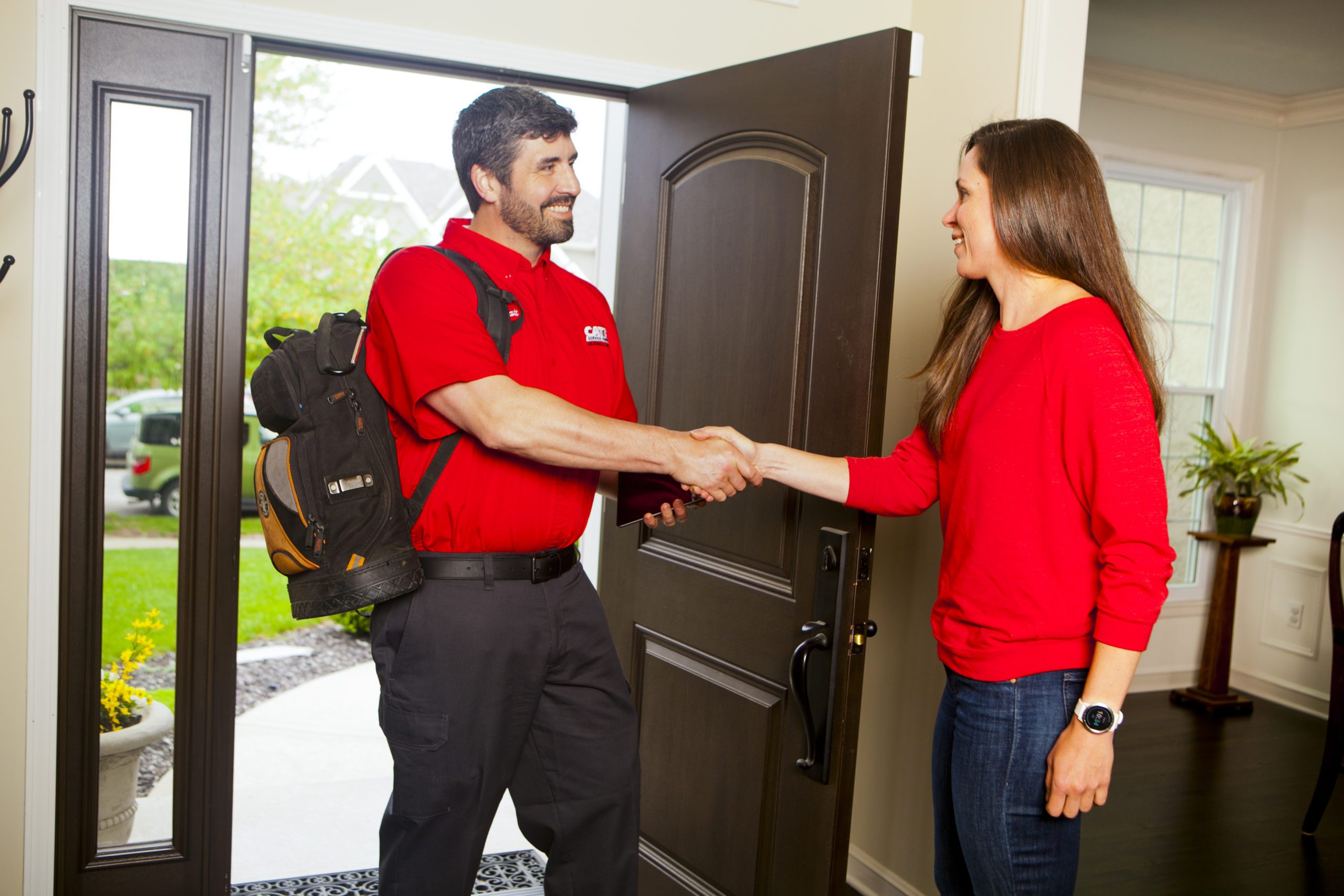
Preventing Sewer Backups
While many home sewage backups cannot be fully prevented, there are some actions homeowners can take to avoid sewer and plumbing problems in the future. Many sewage problems, such as those caused by a clog or blockage, can be easily avoided by performing routine plumbing maintenance and care.
To prevent future backups, here are some tips to follow:
- Do not pour grease down the kitchen sink drain, as it will solidify and create blockages.
- Avoid putting large quantities of food down the drain, especially those that are highly fibrous.
- Never flush items such as diapers, paper towels, feminine products, or facial tissues down the toilet.
- Schedule regular sewer pipe inspections every few years to ensure that no pipes are damaged and that all are clear of clogs, debris, and other blockages. Proper care and maintenance will save you time and money in the future.
- Have a professional plumber perform a sewer line cleanout to remove blockages and prevent future clogs.
- Replace older sewer lines with newer plastic piping.
- Always ensure your system’s sump pump is sitting in a clean area to avoid debris or gravel from being sucked into it and ruining the motor.
What to Do If You Have a Sewage Backup
A sewage backup is not only dangerous, but it can also be a huge mess for you and your family. Knowing the causes of a sewer backup in your home will help you to determine whether the problem can be fixed yourself or if you need to call a professional technician.
Here are some steps to take if a sewage backup occurs in your home:
- Evacuate the flooded area and avoid contact since human waste is considered a biohazard. The flooded area must be cleaned and sanitized before it is considered safe again for your family and pets.
- Turn off all electrical power in the flooded area and do not go near any electrical devices. Touching any wastewater without turning off the power will result in electrical shock.
- Shut off your home’s main water valve and do not flush toilets or use tubs and sinks until the backup has been fixed.
- Open windows and doors to ventilate the area.
- Wear protective clothing, such as a facemask, eye protection, gloves, and rubber boots.
- Notify your insurance company that you’ve had a sewage backup in your home, especially if any of your walls, flooring, or belongings have been ruined.
Finally, call a professional to fix the problem. Typically, homeowners do not have the equipment or level of experience to properly diagnose and fix a sewage backup on their own. Finding a reliable plumber will guarantee that the sewage problem will be fixed, and future backups are less likely to happen.
Call our professional plumbing technicians at Cates Heating and Cooling. Our expert plumbers will diagnose the problem and fix any issues as soon as possible. We also offer financing options to fit your budget, so you can still receive the emergency plumbing services you need. Contact us today at 913-888-4470 for Kansas residents and 816-944-1844 for Missouri residents.



